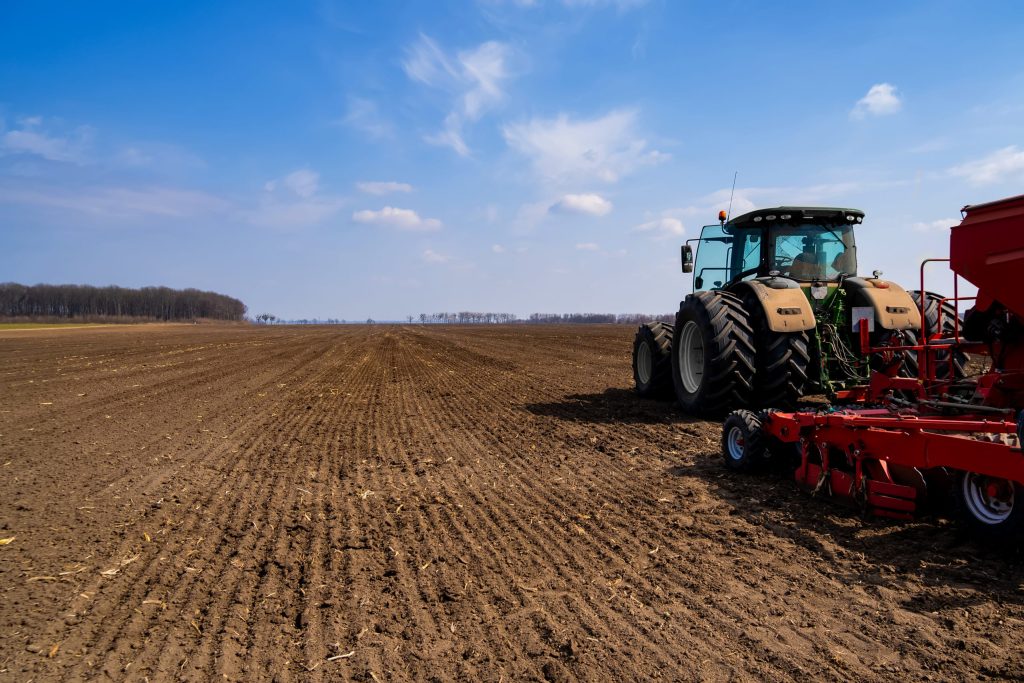Darrell Tennie Receives Crop Insurance Industry Outstanding Outreach Award

Darrell Tennie is a recipient of the 2024 Crop Insurance Industry Outstanding Outreach Award, which was presented during the 2024 Crop Insurance Industry Annual Convention in Scottsdale, Arizona. The Outstanding Outreach award recognizes an individual who provides outstanding service to all farmers, including outreach to small, limited resource, and socially disadvantaged farmers. Darrell Tennie and […]
Crop Insurance is the Cornerstone of the Farm Safety Net

Crop insurance serves America’s farmers and ranchers through effective risk management tools that strengthen the economic stability of agricultural producers and their rural communities. This ensures Americans have access to a safe and secure food supply. Because it protects all American farming operations—no matter the size—it’s an incredibly diverse and robust program. Don’t believe us? […]
Keep America Growing

America’s farmers grow fresh fruits and vegetables for our dinner tables. They grow the ingredients used in millions of food products. They raise livestock and produce dairy. And farmers grow the cotton, flax, and hemp that clothe us. Farmers touch our lives in many ways, every single day. National Ag Day recognizes and gives thanks […]
Crop Insurance Keeps Farmers Fighting

Weather is one of a farmers’ top concerns. Just enough sun and rain will power a plant, resulting in a good yield. But too much sun and not enough rain, or too much rain and not enough sun, and a farmer might soon be counting his losses. The challenges presented by weather volatility was something […]
President’s Budget Recognizes Crop Insurance is Key to Farm Safety Net
The President this week released his proposed Fiscal Year (FY) 2023 budget that fully funds the federal crop insurance program in recognition of the indispensable role that crop insurance plays in the farm safety net. The release of the FY 2023 Budget follows a letter sent to OMB and the Secretary of Agriculture by 55 […]
Vilsack: USDA ‘Laser Focused’ on Crop Insurance Access

The U.S. Department of Agriculture (USDA) is committed to affordable and flexible crop insurance for the nation’s farmers, ranchers, and producers, according to Secretary Tom Vilsack. He made his pre-recorded remarks on the second day of the crop insurance industry’s annual convention in California. “Your work is critical to helping America’s farmers, ranchers, and producers […]
Crop Insurance Protects YOUR State

The past year has instilled in many of us a deeper appreciation for America’s farmers and ranchers – and the daily challenges they face to keep America supplied with a bounty of food and fiber. From sea to shining sea, America’s crop insurance providers are proud to stand beside our farmers and ranchers and provide […]
Celebrating Our Farmers Today and Everyday

Many Americans may never step foot on a farm. But America’s farmers and ranchers are an integral part of our everyday lives, working to feed and clothe the nation. In fact, each American farmer feeds more than 165 people. Today is National Agriculture Day, a day to celebrate the American farmer and recognize the incredible […]
“My life purpose is to farm.”
“One year of disaster and I figured out how important crop insurance is.” — Lynn Wilken, Farmer, Ashkum, Illinois
‘I’d rather not collect on crop insurance.’
“To critics I’d say take one year in my shoes, on a bad year, and see if you like crop insurance or not.” “I’d rather not collect on crop insurance.” – Mike Abbott

